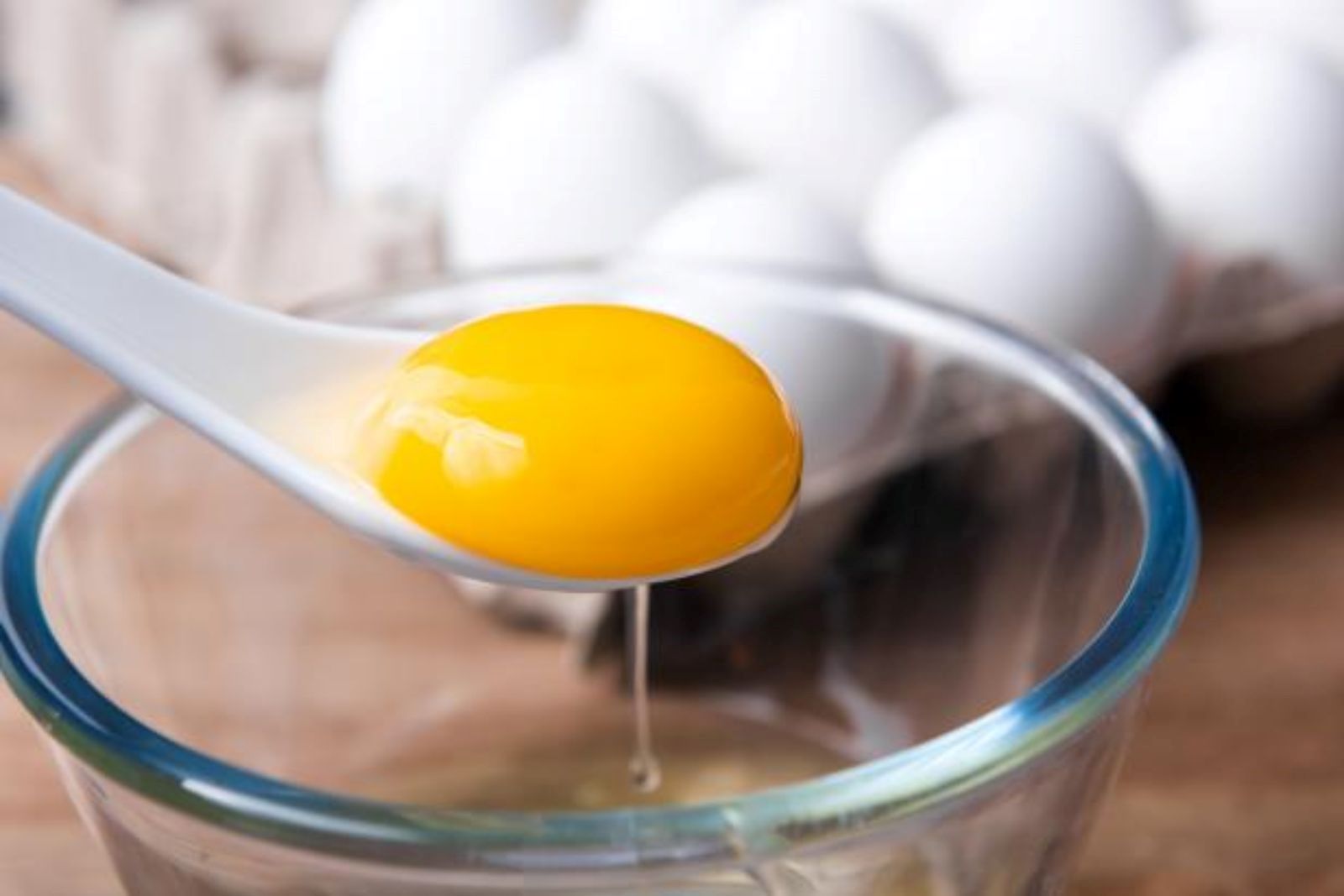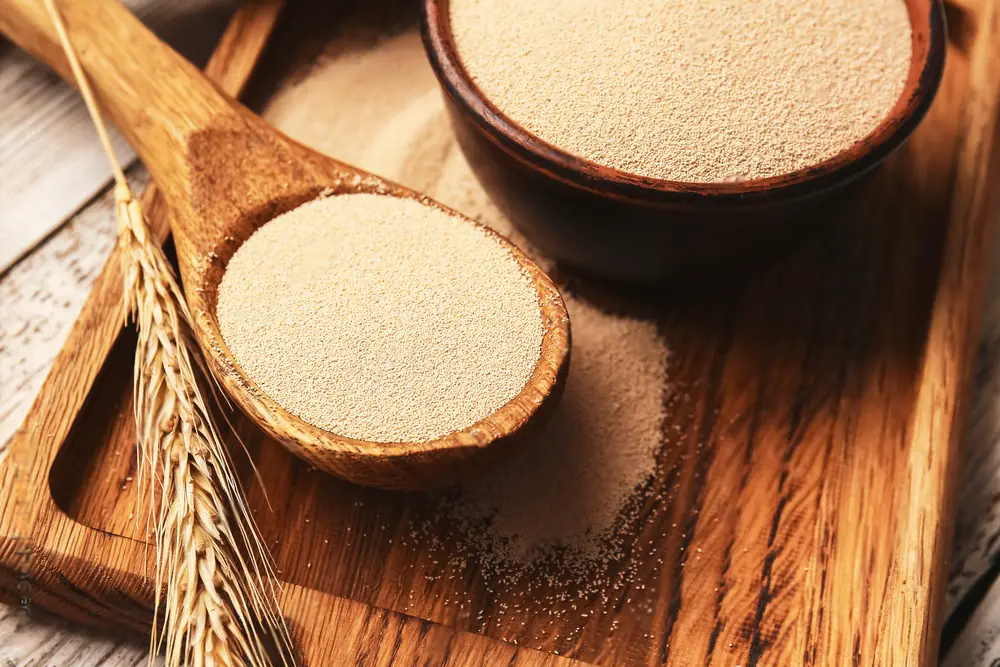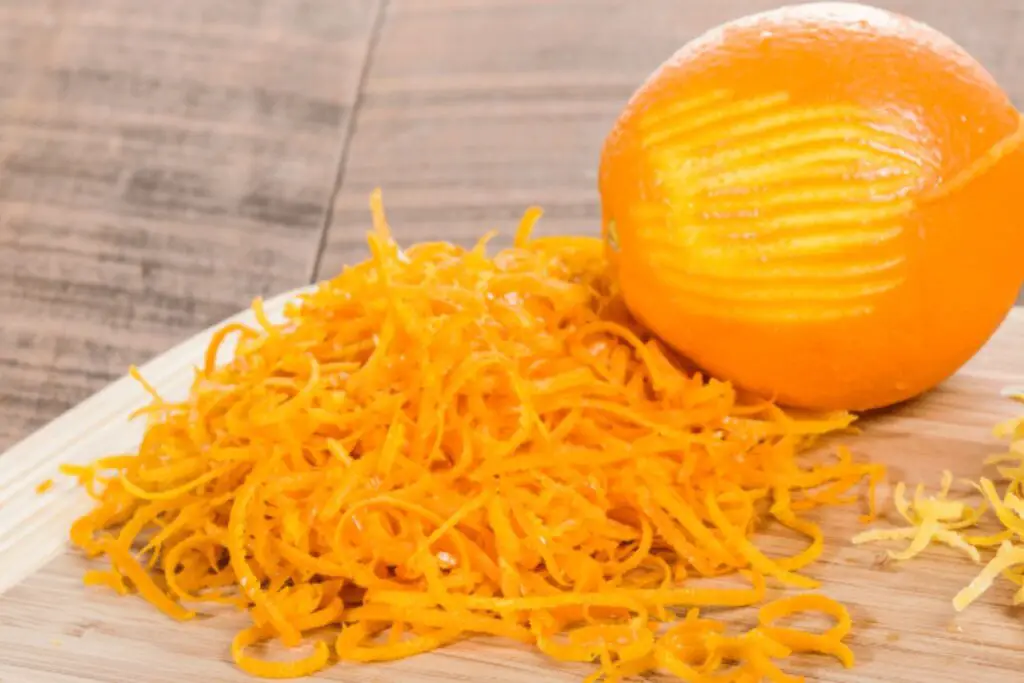
Egg yolks are the yellow, round portion of an egg’s contents. They are rich in nutrients and are responsible for providing the majority of the egg’s fat and cholesterol. Yolks are high in vitamins A, D, E, and K, as well as essential fatty acids. They are commonly used in cooking and baking to add moisture, richness, and flavor to dishes. Freezing egg yolks is a convenient way to preserve them for future use. By following a few simple steps, you can freeze egg yolks effectively and have them ready whenever you need them. In this article, we will guide you through the process of freezing egg yolks and provide useful tips to keep in mind.
Here are the steps to freeze egg yolks:
Step 1: Separate the egg yolks from the whites
To freeze egg yolks effectively, it is essential to separate them from the egg whites. When eggs are cracked, they contain both the yolk and the white, each with distinct properties and characteristics. By separating the yolks from the whites, you ensure that each component can be utilized separately and optimally preserved when frozen.
Cracking the eggs one at a time into a bowl allows for better control during the separation process. It helps prevent any accidental contamination between the yolks and whites, which could compromise the quality and texture of the frozen yolks. Any traces of egg whites mixed with the yolks may affect their ability to freeze evenly and result in a gel-like consistency or graininess.
Carefully transferring the yolks to a separate container ensures that they can be stored properly without the risk of contact with the egg whites. Using a clean and dry container for the yolks allows for easy measurement and portioning if needed in future recipes. Proper separation of the yolks from the whites is a crucial step in freezing egg yolks to maintain their quality and usability.
Can I freeze egg yolks in their shells?
No, it is not recommended to freeze egg yolks in their shells. Freezing eggs in their shells can cause the liquid inside to expand and potentially crack the shell, leading to potential contamination. It is best to separate the yolks from the whites and freeze the yolks using proper storage containers or ice cube trays.
Step 2: Incorporate a protective agent
When freezing egg yolks, it’s important to consider that they can undergo changes in texture and consistency during the freezing process. To prevent the yolks from becoming thick and gel-like, which may affect their usability in future recipes, it’s beneficial to incorporate a protective agent.
Adding a small amount of sugar or salt to the yolks acts as a protective agent to help maintain their desired texture and prevent them from becoming overly thick or gelatinous when frozen. For every four yolks, you can add either 1/8 teaspoon of salt or 1 1/2 teaspoons of sugar.
The salt or sugar works by controlling the freezing point of the yolks. By lowering the freezing point, it helps inhibit the formation of large ice crystals, which can contribute to a gel-like consistency. The protective agent also helps maintain the yolks’ structure and keeps them from becoming grainy or lumpy when thawed.
To incorporate the protective agent, gently whisk the yolks and the chosen ingredient together until they are well combined. This ensures an even distribution of the protective agent throughout the yolks, further helping to maintain their texture and quality during freezing.
Can I freeze egg yolks without additives like sugar or salt?
Yes, it is possible to freeze egg yolks without incorporating additives like sugar or salt. However, adding a small amount of sugar or salt to the yolks before freezing can help maintain their texture and prevent them from becoming overly thick or gel-like when thawed. The decision to include additives is based on personal preference and the intended use of the frozen yolks.
Step 3: Portion the yolks
When freezing egg yolks, it is helpful to consider your future recipe needs and how you typically use yolks. Portioning the yolks according to the number required in specific recipes offers convenience and prevents unnecessary waste.
By identifying recipes that commonly call for a specific number of yolks, you can portion the yolks accordingly. For instance, if a recipe often requires two yolks, place two yolks in a small container or ice cube tray. This way, when you need to use the yolks later on, you can easily thaw the exact number required without thawing more than necessary.
Portioning the yolks helps eliminate the need to thaw and refreeze larger quantities, which can affect their quality and texture over time. It also reduces food waste by ensuring that you only thaw what you need for each recipe, rather than thawing an entire batch of frozen yolks.
Step 4: Transfer to storage containers
After portioning the egg yolks, it’s time to transfer them to suitable storage containers for freezing. The choice of containers is important to ensure the yolks are protected and preserved properly.
Small, airtight containers or ice cube trays are ideal options for freezing egg yolks. If you opt for ice cube trays, each compartment can hold one yolk, making it easy to portion and thaw individual yolks when needed. This is particularly useful if you frequently use yolks in small quantities for various recipes.
For other containers, ensure they have enough space to accommodate the yolks without being overcrowded. The yolks may expand slightly during freezing, so it’s important to leave a small gap at the top of the container. This gap allows room for expansion, preventing the container from cracking or bursting as the yolks freeze.
Choosing airtight containers helps protect the yolks from exposure to air, which can lead to freezer burn and affect their quality. Airtight containers also prevent any odors from other foods in the freezer from being absorbed by the yolks.
Labeling the containers with the number of yolks in each one can be helpful for easy identification later on. You can also indicate the date of freezing to keep track of their freshness and prioritize their use accordingly.
Can I freeze egg yolks in silicone molds?
Yes, it is possible to freeze egg yolks in silicone molds. Silicone molds provide a convenient and flexible option for freezing yolks in specific shapes or sizes. Simply pour the separated yolks into the silicone molds, ensuring each compartment is filled, and place the molds in the freezer until the yolks are frozen solid. Once frozen, remove the yolks from the molds and transfer them to airtight containers or freezer bags for long-term storage.
Can I freeze egg yolks in plastic bags instead of containers?
Yes, it is possible to freeze egg yolks in plastic bags as an alternative to containers. Ensure that the plastic bags are specifically designed for freezer use and are made from a durable material that can withstand freezing temperatures. Place the separated yolks into the bags, remove excess air, and seal them tightly. Properly labeled and dated plastic bags can be a space-saving option for freezing egg yolks.
Step 5: Label and date the containers
Labeling and dating the containers that hold the frozen egg yolks is an important step to keep track of their contents and storage duration. By providing this information, you can effectively manage your frozen yolks and ensure they are used in a timely manner.
Using a permanent marker or labels, clearly mark the number of yolks contained in each container. This labeling makes it easier to identify and retrieve the desired number of yolks without the need to thaw the entire batch. For example, if a container holds two yolks, mark “2 yolks” on the label or directly on the container.
In addition to labeling the quantity, it is crucial to include the date of freezing. This information helps you prioritize the use of older yolks first to prevent them from staying in the freezer for too long. Yolks can typically be frozen for up to four months without significant quality loss, so having the date on the container allows you to keep track of their freshness and usability.
By dating the containers, you can easily identify the oldest yolks and incorporate them into your recipes before using the more recently frozen ones. This practice ensures that the yolks are consumed within a reasonable time frame and minimizes the risk of food waste.
Step 6: Freeze the egg yolks
After properly labeling and dating the containers, it’s time to freeze the egg yolks. Follow these steps to ensure proper freezing and storage:
- Place the sealed containers in the freezer: Put the containers with the egg yolks into the freezer. Ensure that the containers are tightly sealed to prevent air exposure, which can lead to freezer burn and affect the quality of the yolks. Placing the containers upright helps avoid any accidental spills or leaks during freezing.
- Store in the coldest part of the freezer: To maintain a consistent and optimal temperature, store the containers in the coldest part of your freezer. This area is usually located at the back or bottom of the freezer. A consistent temperature helps preserve the quality and texture of the frozen yolks.
- Freezing duration: Egg yolks can be frozen for up to four months without significant quality loss. However, for the best flavor and texture, it’s recommended to use them within this time frame. Keeping track of the freezing date, as mentioned in the previous step, helps ensure that you use the oldest yolks first.
- Thawing for use: When you need to use the frozen egg yolks, simply remove the desired number of yolks from the freezer. Thaw them in the refrigerator overnight to ensure a gradual and safe thawing process. This slow thawing method helps maintain the integrity of the yolks and ensures they are ready to use in your recipes. Avoid thawing frozen egg yolks at room temperature to minimize the risk of bacterial growth and ensure food safety.
Can I freeze egg yolks for longer than four months?
While egg yolks can be frozen for up to four months without significant quality loss, they may remain safe to eat for a longer period if stored properly. However, the texture and flavor of the yolks might deteriorate over time. It is recommended to prioritize using frozen egg yolks within the four-month timeframe for the best quality and taste.
Other related questions
Can I refreeze egg yolks?
No, it is generally not recommended to refreeze egg yolks. Freezing and thawing egg yolks can alter their texture and quality, and repeated freezing and thawing can further degrade them. It is best to plan ahead and freeze egg yolks in portions that can be conveniently used in recipes, reducing the need for refreezing.
How do I know if the egg yolks have gone bad after being frozen?
After being frozen, egg yolks can develop signs of spoilage. If the yolks have an off-putting odor or unusual color, such as a grayish or greenish tint, they may have gone bad. Additionally, if there are any signs of mold growth or an unnatural sliminess, it is best to discard the frozen yolks to avoid the risk of foodborne illness.
What are some recipes or dishes that I can use frozen egg yolks in?
Frozen egg yolks can be used in a variety of recipes and dishes. They are commonly used in custards, ice creams, and creamy sauces like hollandaise or carbonara. Frozen yolks can also be incorporated into baked goods such as cakes, cookies, and pastries, adding richness and moisture to the final product. Experimenting with different recipes and exploring culinary possibilities can help you make the most of your frozen egg yolks.
Can I freeze leftover egg yolks from recipes?
Yes, leftover egg yolks from recipes can be frozen for later use. It is important to separate the yolks from any other ingredients and place them in a suitable freezer container. Ensure that the container is tightly sealed to prevent air exposure and freezer burn. Label the container with the number of yolks and the date of freezing for easy tracking. Frozen leftover egg yolks can be safely stored and used in future recipes.
Are there any special considerations for freezing organic or farm-fresh egg yolks?
When freezing organic or farm-fresh egg yolks, there are a few special considerations to keep in mind. It is important to ensure that the yolks are fresh and free from any cracks or contamination before freezing. Additionally, some individuals prefer to pasteurize the yolks prior to freezing to reduce the risk of foodborne illnesses. Following proper handling and storage practices will help maintain the quality and safety of frozen organic or farm-fresh egg yolks.
Can I freeze pasteurized egg yolks?
Yes, you can freeze pasteurized egg yolks. Pasteurization helps reduce the risk of foodborne illnesses by eliminating harmful bacteria from the yolks. Freezing pasteurized egg yolks can help extend their shelf life and preserve their quality. Follow the same guidelines for freezing unpasteurized yolks, such as proper storage in airtight containers or freezer bags, labeling, and thawing before use.
Can I freeze egg yolks with other ingredients, like milk or cream?
It is generally not recommended to freeze egg yolks with other ingredients like milk or cream. Mixing yolks with liquid dairy products before freezing can result in texture changes and separation upon thawing. It is best to freeze egg yolks separately and combine them with other ingredients when you are ready to use them in a recipe.








